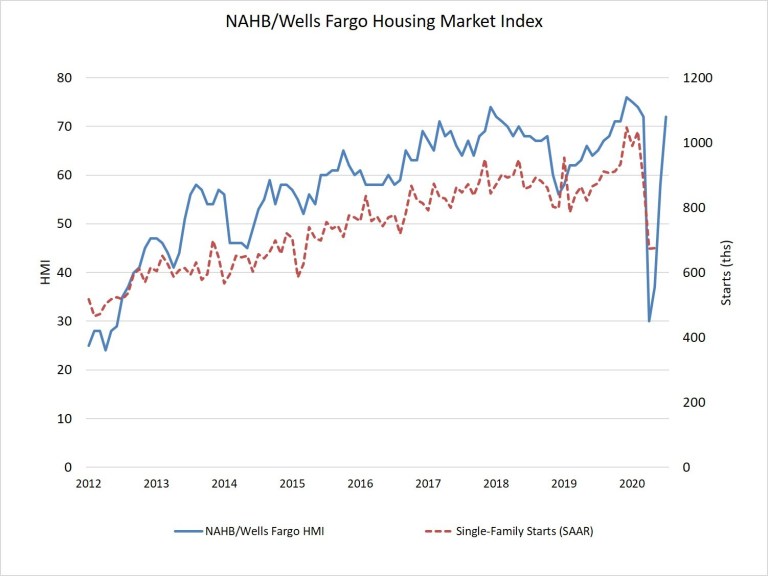Economists talk about the potential for a V shaped recovery from the pandemic and that is exactly the pattern displayed by the National Association of Home Builders (NAHB)/Wells Fargo Housing Market Index (HMI). The HMI, a measure of builder confidence in the market for newly constructed homes, rose 14 points this month, completing the upward leg of the V and returning to its pre-pandemic March reading of 72. The index had plummeted 42 points in April before staging a three-month comeback.

Derived from a monthly survey that NAHB has been conducting for 30 years, the HMI gauges builder perceptions of current single-family home sales and sales expectations for the next six months as "good," "fair" or "poor." The survey also asks builders to rate traffic of prospective buyers as "high to very high," "average" or "low to very low." Scores for each component are then used to calculate a seasonally adjusted index where any number over 50 indicates that more builders view conditions as good than poor.
All the HMI indices posted gains in July. The HMI index gauging current sales conditions jumped 16 points to 79, the component measuring sales expectations in the next six months rose seven points to 75 and the measure charting traffic of prospective buyers posted a 15-point gain to 58.
NAHB said builders are seeing strong traffic and interest in new construction as inventory issues persist for existing homes. Builders in the Northeast and the Midwest are benefiting from the pent-up demand after the spring lockdowns and low interest rates are further fueling demand.
Still there are challenges. Lumber prices are at two-year highs and builders are reporting rising costs for other building materials while lot shortages and skilled labor availability issues persist.
NAHB sees new home demand improving in lower density markets, including small metro areas, rural markets and large metro exurbs, as people seek out larger homes and anticipate more flexibility for telework in the years ahead. "Flight to the suburbs is real," it says.
Looking at the monthly average regional scores, the Northeast HMI surged 22 point to 70, the Midwest jumped 18 points to 68, the South increased 10 points to 73 and the West increased 14 points to 80.







